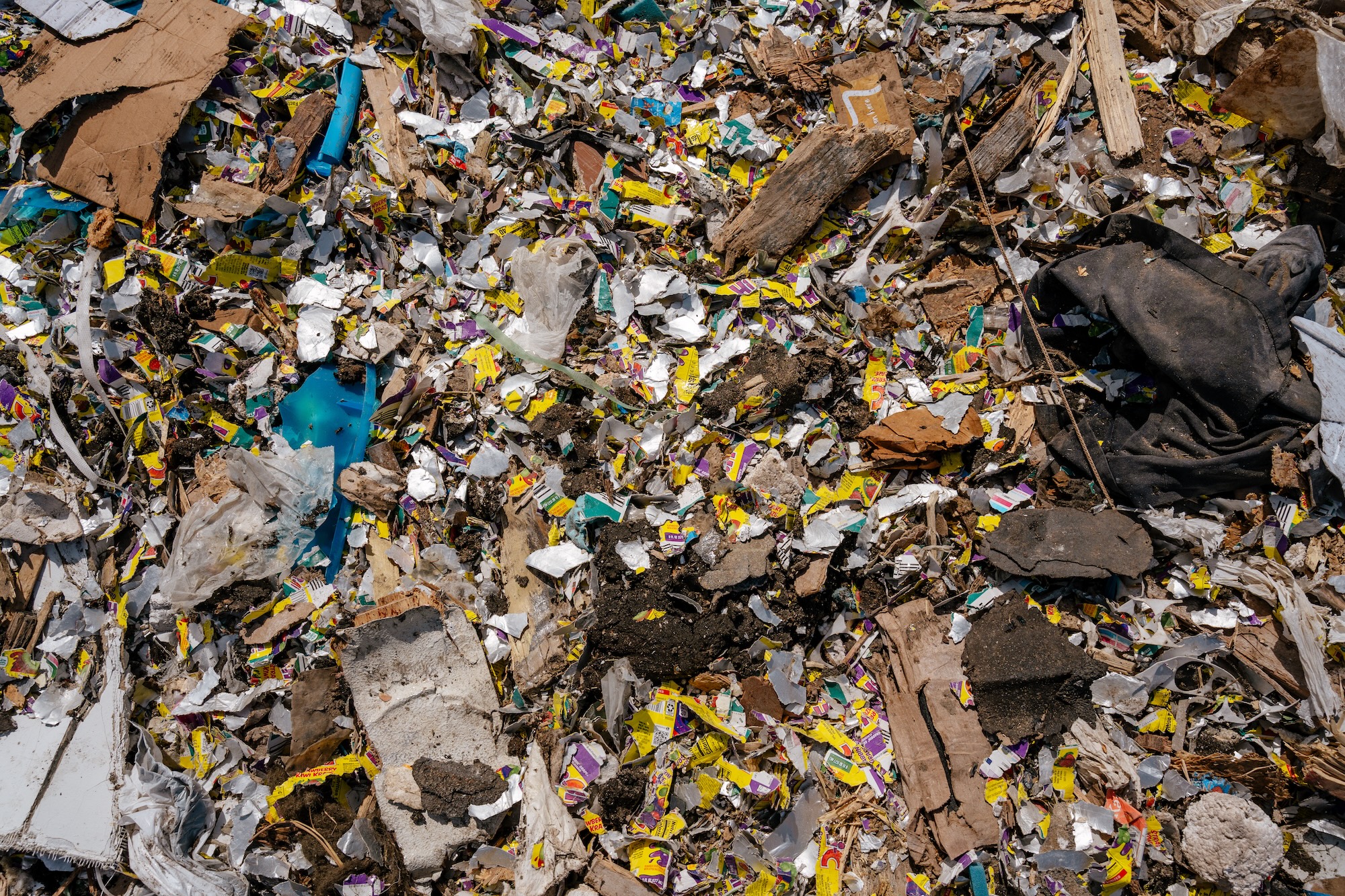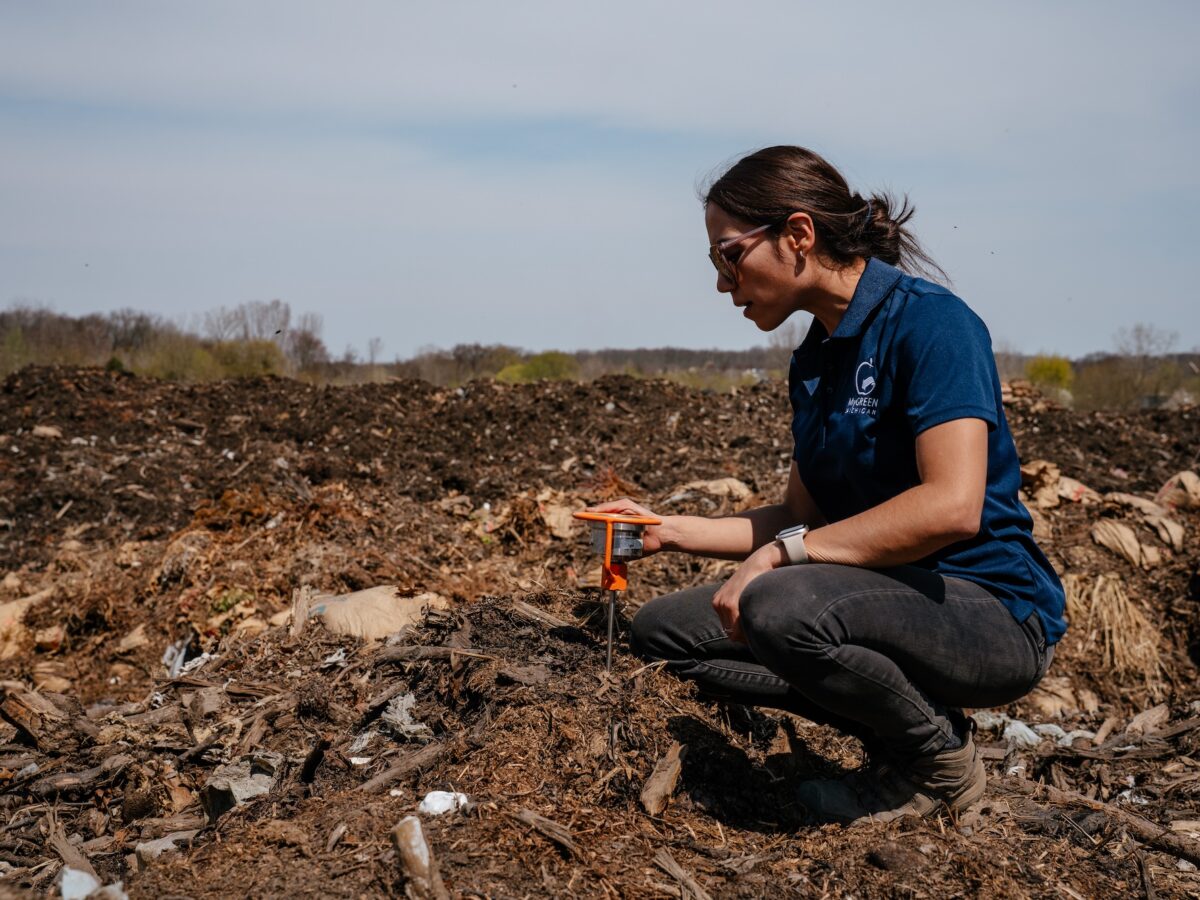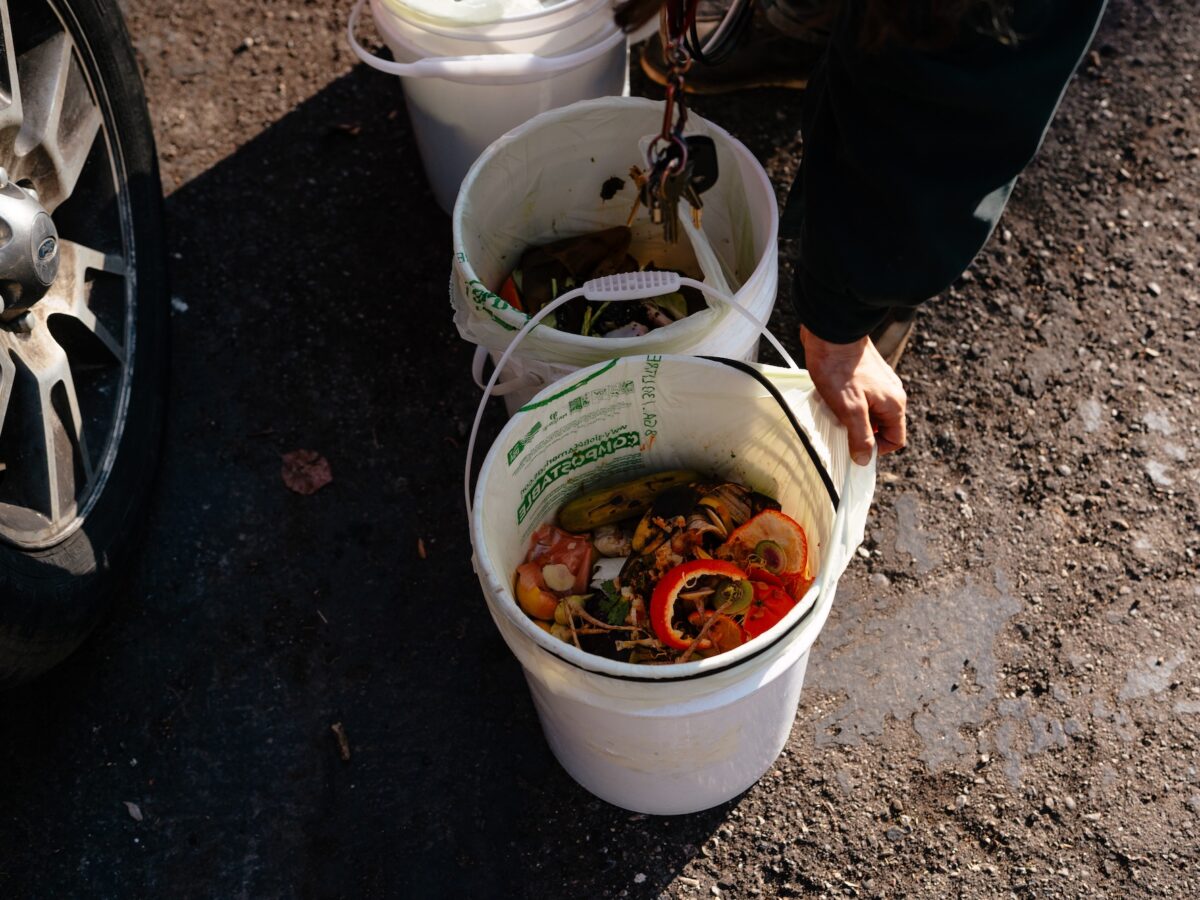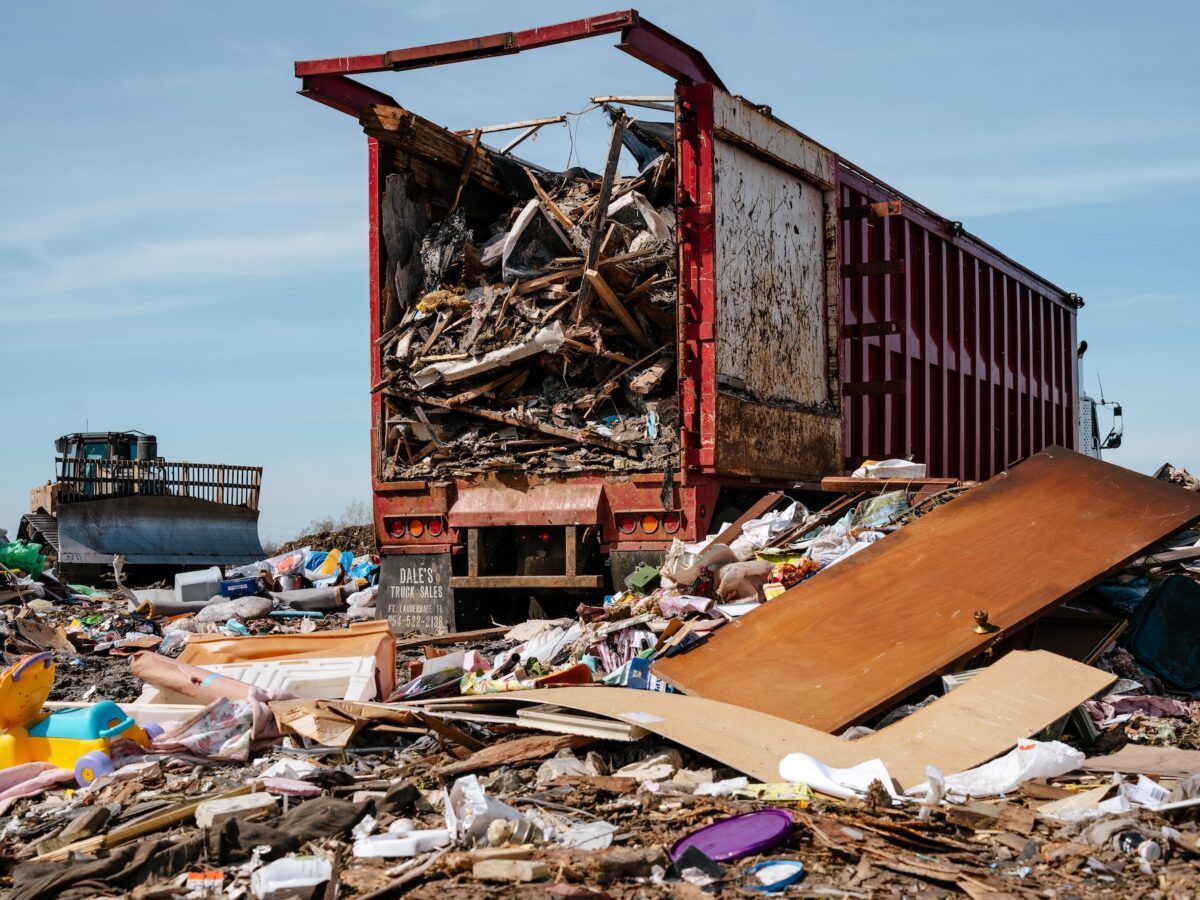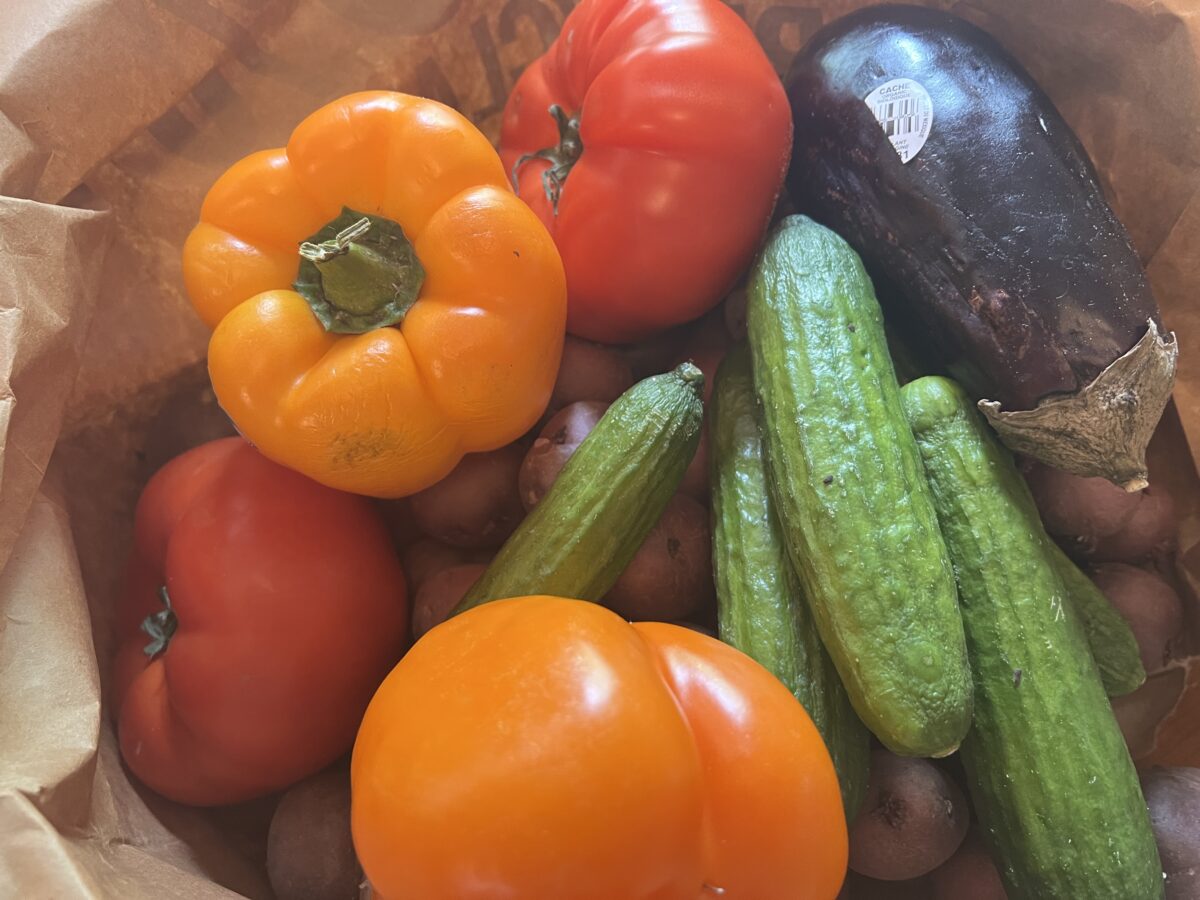Overview:
- In Michigan, food waste is fueling climate change as methane emissions from landfills soar. Ranking 8th nationwide for food waste landfilled, the state sees 58% of fugitive landfill methane emissions stemming from discarded food.
- Volunteers and organizations are stepping up, distributing food to those in need, tackling pre-consumer waste, and advocating for composting and rescue efforts.
- Yet, Michigan's policy landscape remains sparse, with limited and uneven implementation hindering progress.
Janet Damian will never forget the day she picked up 300 pounds of raw chicken from a food distributor in Metro Detroit.
The donation wasn’t halal—a potential issue for the Dearborn school it was originally intended for—and it came packed in boxes already leaking juice into the back seat of her Honda Accord.
“Stop! It’s going to get on the upholstery,” she told her husband as they tried to wedge it into the car. Eventually, they managed to distribute it to a network of families and community kitchens. But it took hours, a lot of freezer space, and a full seat shampooing to keep the car usable.
For Damian, a retired medical administrator turned food rescue volunteer for Food Rescue US- Detroit, the work is meaningful, if maddening. “We’re reducing food waste by distributing it to people who need it,” she said. “It’s just a sense of satisfaction.”
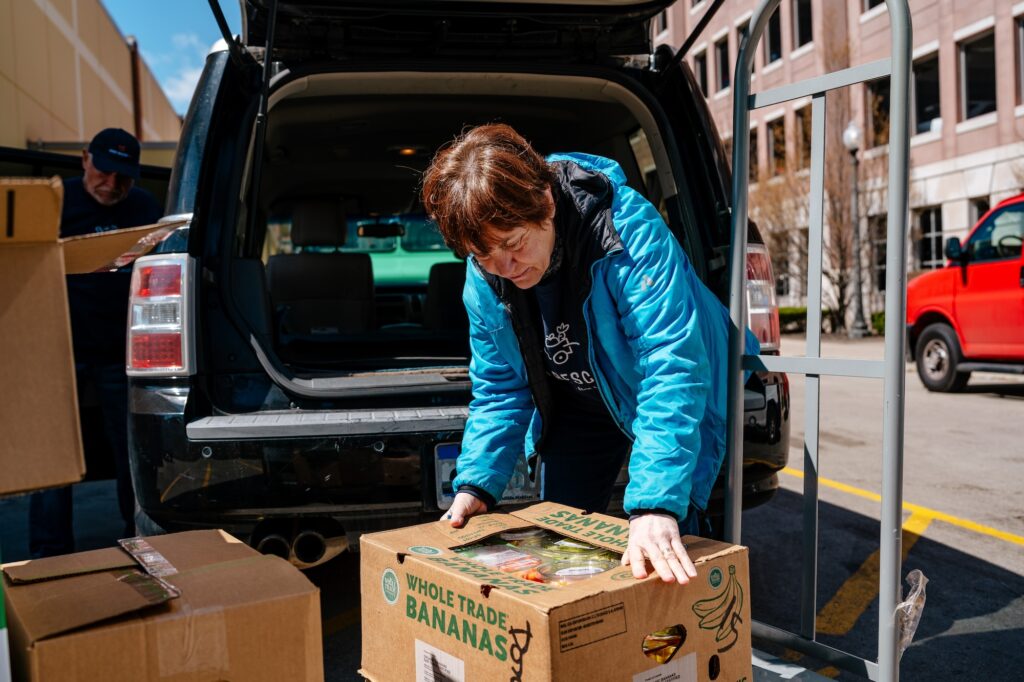
In Michigan, where roughly 19% of all landfill-bound waste is food, up from 13.5% in 2016, that kind of redistribution is a rare bright spot. Residential sources are a major contributor, but food waste also flows from restaurants, grocery stores, food processors, schools and institutions. Other components of Michigan’s waste stream include non-food waste organics like yard waste, corrugated cardboard, wood, and mixed paper recyclables.
Statewide, over 1.5 million tons of food are wasted annually, much of which is still edible. Yet the majority ends up decomposing in landfills, releasing methane, a potent greenhouse gas, and wasting the resources used to grow, transport, and store that food in the first place. About 5% of Michigan’s total methane comes from landfills.
According to a 2023 EPA report, methane from food waste is hard to capture; 61% (nearly two-thirds) doesn’t get collected. Municipal landfills are the third-largest stationary source of greenhouse gases in Michigan, after electricity generation and the burning of fossil fuels on-site at factories, institutions, and large buildings.
Michigan ranks eighth in the U.S. for the total amount of food waste landfilled, at approximately 745,000 tons annually, according to ReFED, a national nonprofit focused on reducing food waste across the U.S. food system. The Michigan Sustainable Business Forum estimates the market value of landfilled food waste in Michigan is between $18 and $36 million per year.
Compared to states like California or Massachusetts, which mandate commercial food waste diversion, Michigan lacks policies to prevent food from becoming landfill waste. The state does not ban food waste from landfills, and municipal curbside compost pickup is not widespread. This may change — in 2023, Michigan passed a law requiring all counties to create plans for the recovery of organic materials. But it’s still early days, and implementation remains limited and uneven.
That leaves volunteers like Damian—and organizations like Food Rescue US —on the front lines of an uphill battle: keeping edible food out of the trash and redirecting it to people who need it most.
Some groups are working to prevent pre-consumer food waste, such as vegetable peels and eggshells, from entering landfills, while others focus on post-consumer waste, like leftovers. They’re working on a variety of methods across the entire food ecosystem, including composting, food rescue, emerging reuse solutions and more.
This story is the first in a multi-part series examining Michigan’s food waste crisis — where it comes from, where it ends up, and what it costs us.
When food rots, climate and the economy pay
When food is thrown away and buried in a landfill, it doesn’t just disappear. It’s sealed off from oxygen, where it decomposes anaerobically and produces methane, a potent greenhouse gas.
While the greenhouse gas carbon dioxide, which comes from the burning of fossil fuels like coal and gas, stays in the atmosphere much longer, methane traps more than 80 times as much heat as CO₂ over a 20-year period. That short-term impact is especially perilous as the world strives to limit the rise in global temperature over the coming decades.
Methane is particularly damaging because it accelerates warming while also contributing to the formation of ground-level ozone, a pollutant that harms human health and crops. And unlike carbon dioxide, which comes mainly from combustion, methane is often released from biological processes, like rotting food in sealed landfills, making it harder to monitor and control.

In Michigan, landfills are the third-largest source of methane emissions, trailing only the energy, oil and gas sectors. This is driven mainly by Michigan’s widespread use of landfills and its relatively limited fossil fuel production. Michigan ranks fourth in the nation for the number of landfills and sixth for total landfill methane emissions, despite being only the 10th most populous state.
In FY 2024, Michigan landfilled more than 24.1 million tons of solid waste—an increase of 5.4% over the previous year. Nearly 82% of that waste was generated in-state, with the rest imported primarily from Canada.
Michigan has more landfill waste per resident than any other state — 72% above the national average, according to a 2024 analysis.
Michigan adds a 36-cent-per-ton surcharge on top of standard landfill tipping fees—far below the surcharges in Ohio ($4.75) and Wisconsin ($13). Combined with low base costs due to abundant landfill space, this has made the state a destination for out-of-state and Canadian trash. In April 2025, Democratic lawmakers reintroduced a bill to raise Michigan’s surcharge to $5 per ton.
Because food breaks down quickly, most of that methane escapes before landfill operators can install or expand gas collection systems. Nationwide, the EPA estimates that almost two-thirds of methane from food waste in landfills is not captured — a gap that makes even well-managed landfills a significant source of climate pollution.
The scale is staggering. For every 1,000 tons of food waste, landfills release about 34 metric tons of fugitive methane – methane not captured by a gas collection system. Most of these landfills are located in Wayne and Oakland counties.
State law requires Michigan landfills to install gas capture systems; however, the law was not enacted until 1994. Most older landfills typically don’t have these systems in place.
But it’s not just the climate. According to Daniel Schoonmaker, executive director of the West Michigan Sustainable Business Forum, business also loses.
“Farms and food manufacturers in Michigan are losing around a billion dollars to food loss annually,” Schoonmaker said. That’s food that could have gone to someone but didn’t because it wasn’t harvested or processed due to cost.”
Schoonmaker’s organization commissioned a 2024 study that showed food waste represents a significant economic loss in Michigan. The analysis found that up to $676 million in recoverable materials, with food waste alone valued at up to $36 million annually, could be utilized for compost. Recovering these materials could generate up to $825 million in economic impact and create as many as 4,500 jobs.
Still buried: Why Michigan isn’t doing more to stop food waste pollution
Despite the climate and equity impacts of food waste, Michigan has long lacked policies to address the issue head-on. The state does not ban food waste from landfills, and fewer than 10% of permitted composting facilities accept food scraps, limiting diversion options for residents and businesses.
Two recent policy efforts mark steps forward.
First, the MI Healthy Climate Plan, adopted in 2022, includes a goal to cut food loss and waste in half by 2030 as part of the state’s broader push for carbon neutrality.
Second, a 2023 update to Michigan’s solid waste law requires every county to develop a Materials Management Plan that addresses organic waste and strategies for diversion. These measures have laid important groundwork, but implementation remains slow, and enforcement mechanisms are limited.
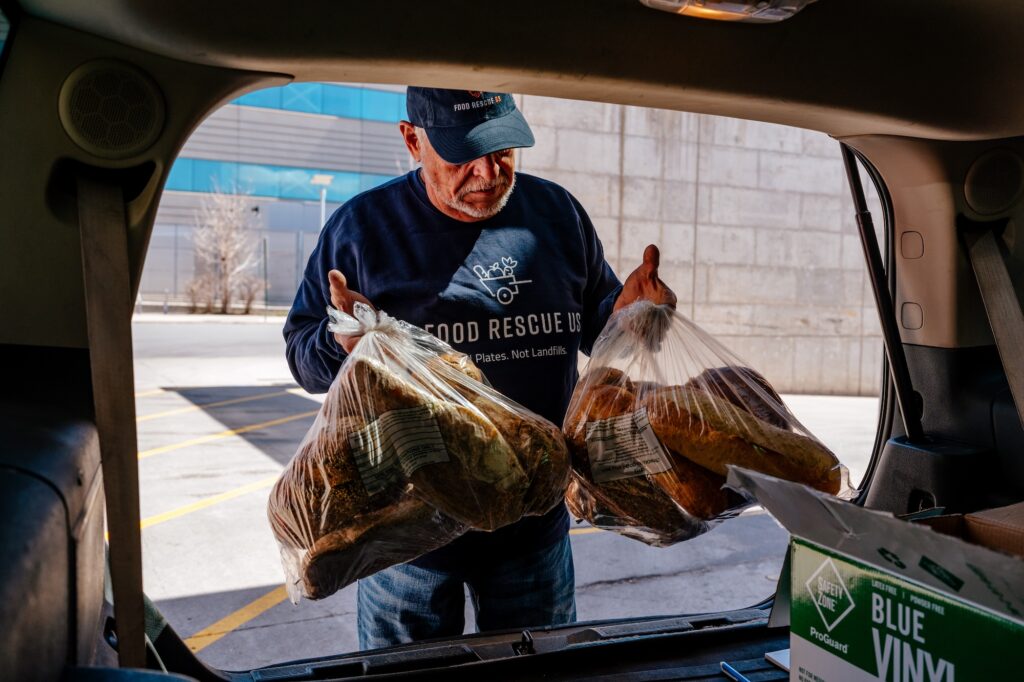
In the meantime, a growing network of entrepreneurs, volunteers, and advocates is working to fill the gap. From community composters and food rescue drivers to startups developing new reuse technologies, these efforts are driving grassroots solutions to a problem still largely overlooked in state policy. The rest of this series explores those efforts.
This series, produced as part of the MIT Environmental Solutions Journalism Fellowship, investigates how Michigan’s food waste system contributes to climate change through landfill methane emissions—and explores the local solutions that could turn the tide. From farm to fridge to landfill, we examine how wasted food impacts our environment, economy, and communities, and highlight the people working to build a more sustainable, climate-friendly future. Published in partnership with Next City.
Compost or combust: Why wasted food is heating up the planet — and how Michigan can stop the rot
Data reporting and visualization contributed by Shelby Jouppi. Photography by Nick Hagen.

